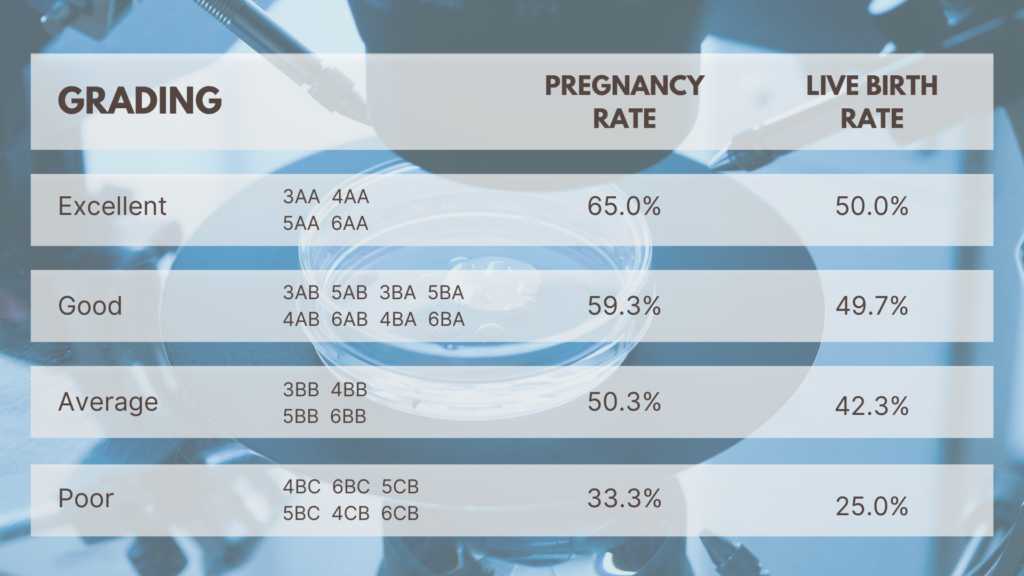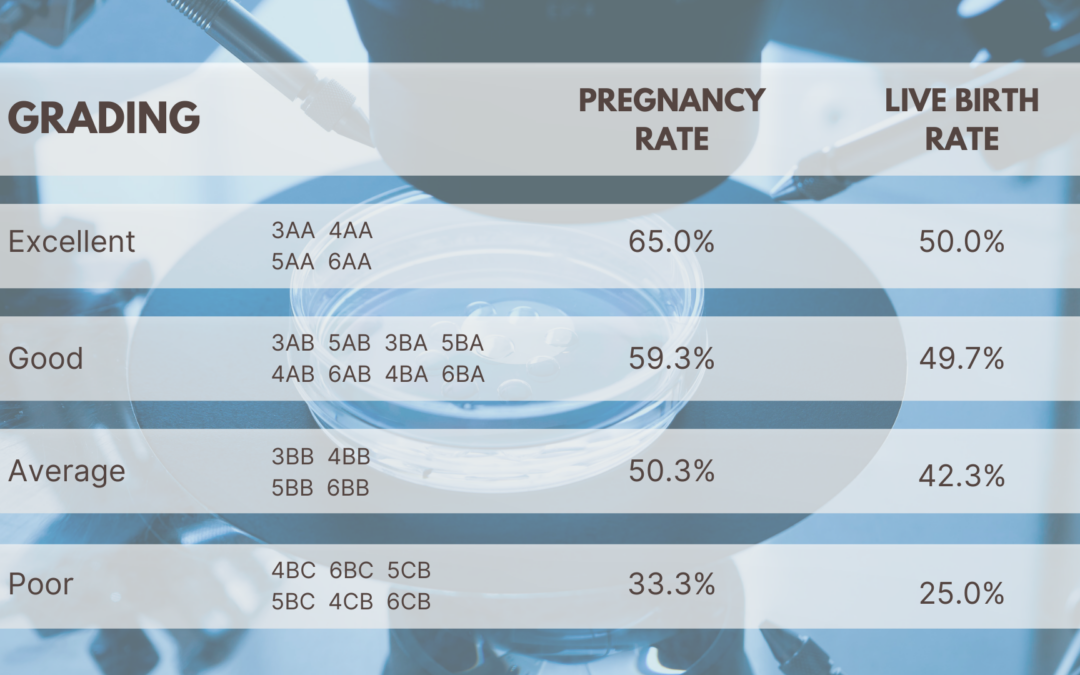If you’re considering IVF to start a family, you’re likely familiar with the term “embryo grading.” But what exactly does it mean? In short, embryo grading is a crucial step in the IVF process that helps determine the health and viability of embryos before they are transferred to the uterus.
And while the concept may seem daunting, understanding embryo grading is essential to making informed decisions about your fertility journey.
In this guide, we’ll break down everything you need to know about embryo grading, including how it’s done, what the results mean, and how they can impact your chances of a successful pregnancy. From the science behind the process to the emotional toll it can take, we’ll provide you with the information you need to navigate this vital aspect of IVF with confidence. So if you’re ready to take the next step on your fertility journey, let’s dive in and explore the world of embryo grading.
What is IVF, and how does it work?
In vitro fertilization (IVF) is a fertility treatment that involves fertilizing an egg with sperm outside the body in a laboratory dish. The resulting embryo is then transferred to the uterus, which can implant and grow into a healthy pregnancy.
IVF is a complex and extensive process involving multiple rounds of treatment. Still, it is often a viable option for singles or couples considering a different route to start a family.
While IVF can be a challenging and emotional journey, it has helped many people achieve their dream of starting a family or preserving their eggs for future use.
The Importance of Embryo Grading in IVF
Embryo grading is a critical step in the IVF process, as it helps doctors determine the health and viability of embryos before they are transferred to the uterus. This can help increase the chances of a successful pregnancy and reduce the risk of complications such as multiple pregnancies.
During the IVF process, doctors will typically fertilize several eggs and allow them to develop into embryos over several days. On the third or fifth day after fertilization, the embryos are graded based on their appearance and development. This grading system helps doctors determine which embryos will most likely result in a successful pregnancy.
Factors that Affect Embryo Grading
Several factors can affect embryo grading, including the quality of the eggs and sperm used in the IVF process, the culture conditions in the laboratory, and the skill and experience of the embryologist.
The woman’s age undergoing IVF can also play a role, as older women may have lower-quality eggs and a lower chance of a successful pregnancy.
Other factors affecting embryo grading include the number of embryos produced during IVF, the timing of embryo transfer, and any underlying medical conditions that may affect fertility. Ultimately, embryo grading is a complex process that is influenced by a variety of factors, and it requires a skilled and experienced team to ensure accurate and reliable results.
The Embryo Grading Process – Day 1 to Day 5
The embryo grading process typically begins on day one of the IVF cycle, when the woman takes fertility medications to stimulate egg production. Over several days, the eggs are retrieved and fertilized in the laboratory. On day three or day five, the embryos are graded based on their appearance and development.
Embryo grading typically involves assessing the number and quality of the cells within the embryo, as well as its overall appearance and development. Embryos deemed to be of high quality are more likely to result in a successful pregnancy and are typically selected for transfer to the uterus.
Understanding Embryo Grading Scores
Embryo grading scores can be confusing, as fertility clinics use several different grading systems. However, most grading systems are based on a combination of factors such as the number and quality of the cells within the embryo, the degree of fragmentation, and the overall appearance and development of the embryo.
Grading systems typically use a numerical or letter-based scale, with higher scores indicating better quality embryos. For example, some grading systems score 1 to 5, with 5 being the highest quality embryos. Other systems may use a letter-based scale, such as A, B, or C, with A being the highest-quality embryo.
Common Embryo Grading Systems
Several standard embryo grading systems are used by fertility clinics around the world. One of the most widely used systems is the Gardner system, which grades embryos on a scale of 1 to 5 based on their appearance and development. Another standard system is the Istanbul consensus, which uses a letter-based grading system to assess embryo quality.
While there is no one “right” grading system, it’s essential to choose a clinic that uses a reliable and consistent grading system to ensure accurate and reliable results.
Embryo Grading Chart

Improving Embryo Quality – Tips for a Successful IVF Cycle
While embryo grading is an integral part of the IVF process, there are several steps that couples can take to improve their chances of producing high-quality embryos. These steps include maintaining a healthy lifestyle, managing stress, and working closely with a skilled and experienced fertility team.
Other factors that can improve embryo quality include optimizing the timing of IVF treatments, using preimplantation genetic testing to screen for genetic abnormalities, and considering alternative treatments such as donor eggs or surrogacy. Ultimately, the key to a successful IVF cycle is working closely with your fertility team to develop a customized treatment plan that meets your unique needs and goals.
The Role of Genetic Testing in Embryo Grading
Genetic testing can play an essential role in embryo grading, as it can help identify potential genetic abnormalities that may affect the health and viability of embryos. Preimplantation genetic testing (PGT) involves testing embryos for genetic disorders before they are transferred to the uterus.
PGT can screen for genetic disorders, including chromosomal abnormalities, single-gene disorders, and other genetic conditions. By identifying potential genetic issues before transfer, PGT can help increase the chances of a successful pregnancy and reduce the risk of miscarriage and other complications.
Managing Expectations: What to expect during the Embryo Grading process
Embryo grading can be a stressful and emotional process, as it involves making difficult decisions about the health and viability of embryos. It’s essential to work closely with your fertility team to manage your expectations and understand the potential risks and benefits of each step in the IVF process.
Keep in mind that embryo grading is just one step in the IVF process and that many factors can affect the success of a cycle. By staying informed and working closely with your fertility team, you can make informed decisions about your fertility journey and increase your chances of a successful pregnancy.
Making Informed Decisions about IVF and Embryo Grading
Embryo grading is a critical step in the IVF process, and understanding how it works is essential to making informed decisions about your fertility journey. By working closely with a skilled and experienced fertility team, you can optimize your chances of producing high-quality embryos and increase your chances of a successful pregnancy.
Whether you’re just starting your fertility journey or have been struggling with fertility for years, there is hope. By staying informed and actively participating in your IVF treatment, you can achieve your dream of starting a family and building the life you’ve always wanted. So take the first step today, and start exploring the world of embryo grading and IVF.



